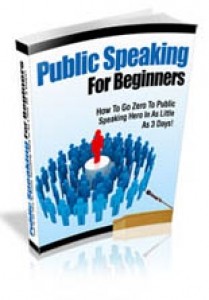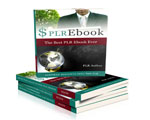
 License Type: Private Label Rights
License Type: Private Label Rights  File Size: 2,129 KB
File Size: 2,129 KB File Type: ZIP
File Type: ZIP
 SKU: 4530
SKU: 4530  Shipping: Online Download
Shipping: Online Download
Ebook Sample Content Preview:
#3 Getting your audience engaged
One of the keys to a truly successful presentation is audience participation. By involving your audience in the presentation, you’re helping them focus and better-relate to the material you need to present, therefore encouraging them to take immediate action with the ideas you shared after the session. If you’re wondering why you need to go the extra mile to get your audience to participate and actually remember and apply what you say, let me give you the answer. Your role as a speaker is not just to convey a message, but to also facilitate the absorption and the application of this message. A truly successful speaker truly cares for the audience.
One of the fastest and simplest ways to stimulate audience participation is in the form of an ice-breaker at the very start of the session. Ice-breakers are particularly useful for long seminars, but can also be used in shorter presentations to allow your audience to move around and shake things up before you actually begin. A good ice breaker is to start with asking all members of your audience to stand up and introduce themselves to at least 2 people around them and offer a short, quirky, random fact about themselves.
If you’ve got time and a large group, you can split your audience into small or partner groups and involve everyone in various activities. In order to fully maximize audience participation, you can even get these groups to elect a leader or a representative to share their findings and voice their unanimous thoughts.
During long sessions, it’s easy for the audience to get either groggy or antsy. What you can do is to get them to start your session with warm-up exercises. Ask them to stand up, raise their arms up, and swing about, or even allow them to have a nice cat stretch. Another quirky way of getting them involved, interacting and awake is to get everyone to stand up and give the person next to them a 2-minute back rub. You can also get them up and moving by playing upbeat music and getting them in the groove for a quick shake and dance before you actually begin.
Another good way to actually connect with your audience and get them to interact with you is to throw out a question to them at the beginning of your presentation. A common but smart question is to ask them what they expect to gain from your session or speech and at the end of the session, you can review these points with members of your audience to show exactly what you’ve covered. This is a good way to allow your audience to connect the dots by themselves and actively search your presentation for key takeaways.
In some occasions, you may find yourself wishing to gather input from your audience. Let me share with you a simple and effective method to do so. This method is called the “Ben Franklin Close”. The only materials you need are a whiteboard or flip chart and a marker. You start off by splitting the paper into two lengthwise and labeling each side of the paper - pros and cons for example. Then, you get your audience to shout out answers and ideas while you write them down. This not only stimulates their tired brains and gets them thinking, it also gives you a moment to quickly analyze your presentation, recoup, and decide on your next actions.
It’s not unusual to be faced with awkward, less-sociable members of the audience. In more conservative cultures, open and casual communication and interaction is not the norm. In order to avoid awkward silences and stony glances, you can pre-select a handful of volunteers. This gives them time to prepare, and fills an other-wise overly quiet session. In the situation where you have no response to your question, be prepared to actually answer it yourself. However, it’s important to not take the silence too personally. Every public speaker has faced a stony or less sociable audience at a point in time.
- File Size:2,129 KB
- License: Private Label Rights
- Category:Ebooks
- Tags:2011 Ebooks Private Label Rights







